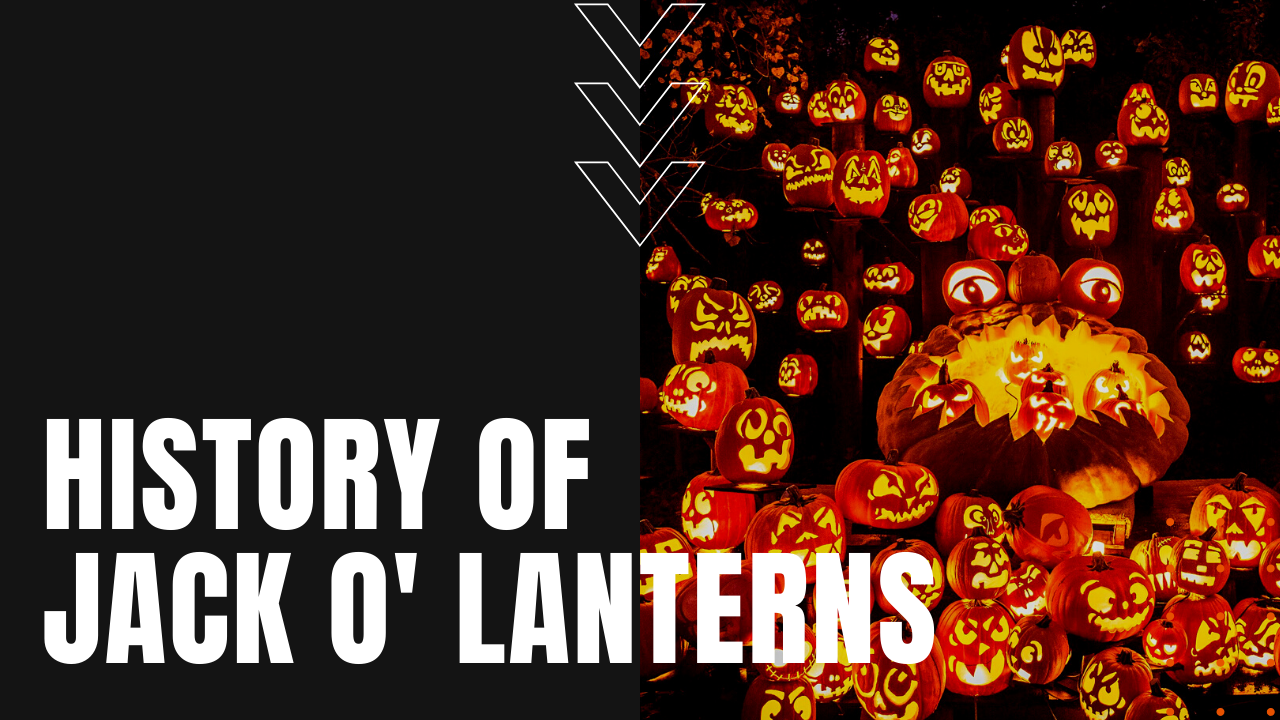History of Jack O’ Lanterns

Legend of Stingy Jack
The traditions of Jack O’Lanterns at Halloween date back centuries to the Irish myth of “Stingy Jack,” who treated the Devil to a wee drink of alcohol, but when it came time to pay the tab, true to Stingy Jack’s name, he convinced the Devil to turn himself into a coin, so that Jack could pay the barkeep. Always one for a good misdeed, after the Devil morphed himself into a gold stater or coin, Jack tucked the coin into his pocket next to a silver cross, which blocked Satan from retaking his original form.
According to the legend, Jack eventually gave the Devil his freedom, so long as Lucifer promised not to bother him for one full year, and should Jack die during that year, Satan further promised not to claim his soul. After Stingy Jack’s grace period had ended, Jack again tricked the Devil into climbing up a tree for some fruit, and when Satan complied, Jack carved a cross in the tree’s bark, effectively trapping the Devil yet again, until Jack made the Devil promise not to bother him for the next ten years to come.
Upon Stingy Jack’s untimely demise, God barred his cheating soul from entering heaven, and when the Devil barred Jack’s entry into hell, he cursed Stingy Jack to a life of aimless nocturnal wandering, with nothing but a burning lump of coal to light his way. As the legend of Stingy Jack took hold, the Irish began to refer to carved and lighted ghostly figures as “Jack of the Lantern,” which eventually shortened to “Jack O’Lantern,” prompting the Irish to carve scary faces on turnips and potatoes, before placing them on window ledges or near doorways, intended to ward off evil spirits.
Pumpkin Carving and Halloween Traditions
The English picked up on the practice by carving scary faces on large beets, and when these two cultures immigrated to the United States, the pumpkin became the natural vegetable of choice.
Now known as Halloween, the traditions of dressing up in costumes and carving pumpkins is based on the Celtic festival of Samhain and Allhallowtide, which was celebrated between the end of summer and the onset of winter, when the Celts believed the souls of the recently departed returned to earth to visit their loved ones, friends and enemies alike.
The date was changed by the Roman Catholic Church in the 8th century A.D., when the church moved All Saints’ Day to November 1st, with the hope of snuffing out the Pagan traditions of Samhain. The move forced All Hallows’ Eve—today’s Halloween—to October 31st, where the donning of costumes and carved lighted pumpkins continues to disorient the occasional wandering ghost, making the legend of Stingy Jack, a lasting precursor to American’s unwavering love of Halloween.
